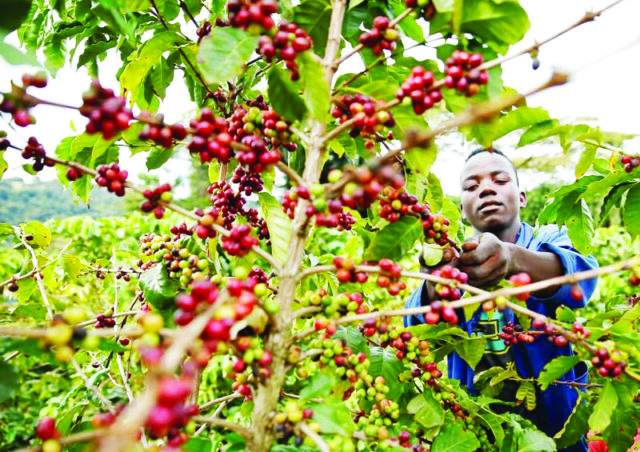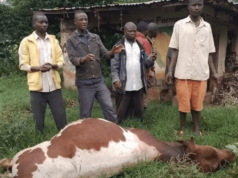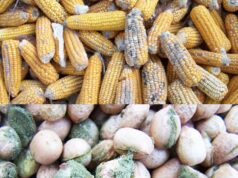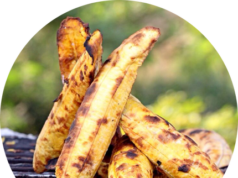By Beatrice Nakibuuka
Coffee remains Uganda’s leading cash crop and the country is among the top 10 leading producers of the crop worldwide.
In the last five years, the government of Uganda has distributed over 1.2 billion coffee seedlings to farmers with intention of increasing its production annually.
“If you have enough land or have somewhere you can hire for some time, coffee growing can be very lucrative,” says Albert Kunihira, a propagator at Greening Uganda.
He adds: “As coffee nursery operators and distributors, we are doing a lot of research about coffee. Coffee can transform Uganda’s economy if handled well. For example, one acre if managed well can give you an average of Shs 9m.”
Accordingly, this is because an acre accommodates 450 seedlings considering spacing of 10ft (3 metres) from one plant to another. This is for Robusta coffee.
With an average of five kilograms per plant, a farmer will harvest 2,250 kilograms of unshelled coffee (kiboko) per season. Given that there are two coffee seasons in a year, a farmer could earn Shs 9m annually.

The varieties:
Elite Robusta
This is a second generation of Clonal Coffee. Robusta Coffee (Coffea canephora) grows in low altitude areas ranging from about 900 to 1,200 meters above sea level.
It has a shallow root system and grows as a robust tree or shrub to about 10 metres tall. It flowers irregularly, taking about 10–11 months for cherries to ripen depending on rainfall distribution, producing oval-shaped beans. It has a greater crop yield per tree, contains more caffeine and less sugar compared to Arabica.
It is less susceptible to pests and disease; thus, needs less fungicides and pesticides. The price per seedling of Elite Robusta Coffee is shs500.
Under good agronomical practices, management and care, Elite Robusta, will give first flowers within 16 months of planting and its yield will give you a minimum of five kilograms per plant.
Clonal Coffee
Clonal Robusta Coffee is vegetatively propagated using the nodal stem cuttings. The available 10 lines of this coffee, are high yielding and resistant to coffee wilt disease.
The Robusta clonal lines commonly propagated are KR1-KR10. These lines are commonly referred to as KR-lines.
The price per seedling of Clonal Coffee is Shs 1,500. Under good agronomical practices, management and care, this kind of coffee will give first flowers within 12 months of planting.
Clonal Robusta coffee yield will give you a minimum of 2,200 kilograms and a maximum of 4,800 kilograms per acre.
Noteworthy, if you add value to your coffee, the returns will be much higher. Needless to say, coffee can be grown in many parts of Uganda, meaning that if each household grew a minimum of an acre, poverty would be history.
Coffee takes an average of three years to start producing yields. The cost of maintaining coffee especially after reaching the flowering stage is quite low.
Coffee seedlings are given free of charge to farmers by the government. However, the price ranges from Shs 300 to 500 in case one is to buy.
Market indicators are that coffee is likely to remain stable in the coming years as more people increasingly consume it globally.
“I believe if Uganda increases production and ensures quality, it could become one of the top five coffee producers in the world and consequently foreign exchange earnings from coffee will skyrocket,” Kunihira says.
Selecting the soil
For successful coffee production, a free draining soil with minimum depth of 3ft before reaching an impermeable soil is required.
Coffee does not tolerate water logging or wet feet. It may be grown on different soil types, but the ideal is fertile, volcanic red earth or deep sandy loam.
Moses Lumu, an agronomist says that for good productivity, avoid heavy clay or poor drained soils. Coffee prefers a soil pH of 5.5 to 7.0; a pH lower than 5.0 or higher than 7.5 will limit crop performance.
He says: “The required mineral nutrients include nitrogen, phosphorus, potassium, sulphur, calcium, magnesium and molybdenum.”
Holes should be dug after the rains when the ground is soft.
Lumu emphasises that “the size of the hole is 45 cm square at the top, and 45 cm deep”.
In digging, the sub-soil should be heaped to one side of the hole, and the top-soil to the other.
The hole is left for about two to three months before planting.
At the onset of the rains, the holes are filled, the top soil going in first.
This is followed by the sub-soil mixed with one tin of well-rotten manure or compost for each hole.
+++++++++++++++++++++++++++++++++++++++++
Subscribe to our website and be the first to receive great Christian news, health information, pastoral guidance, environment, farming and many others. Also, Like and follow us on Facebook at Good News UG.






















